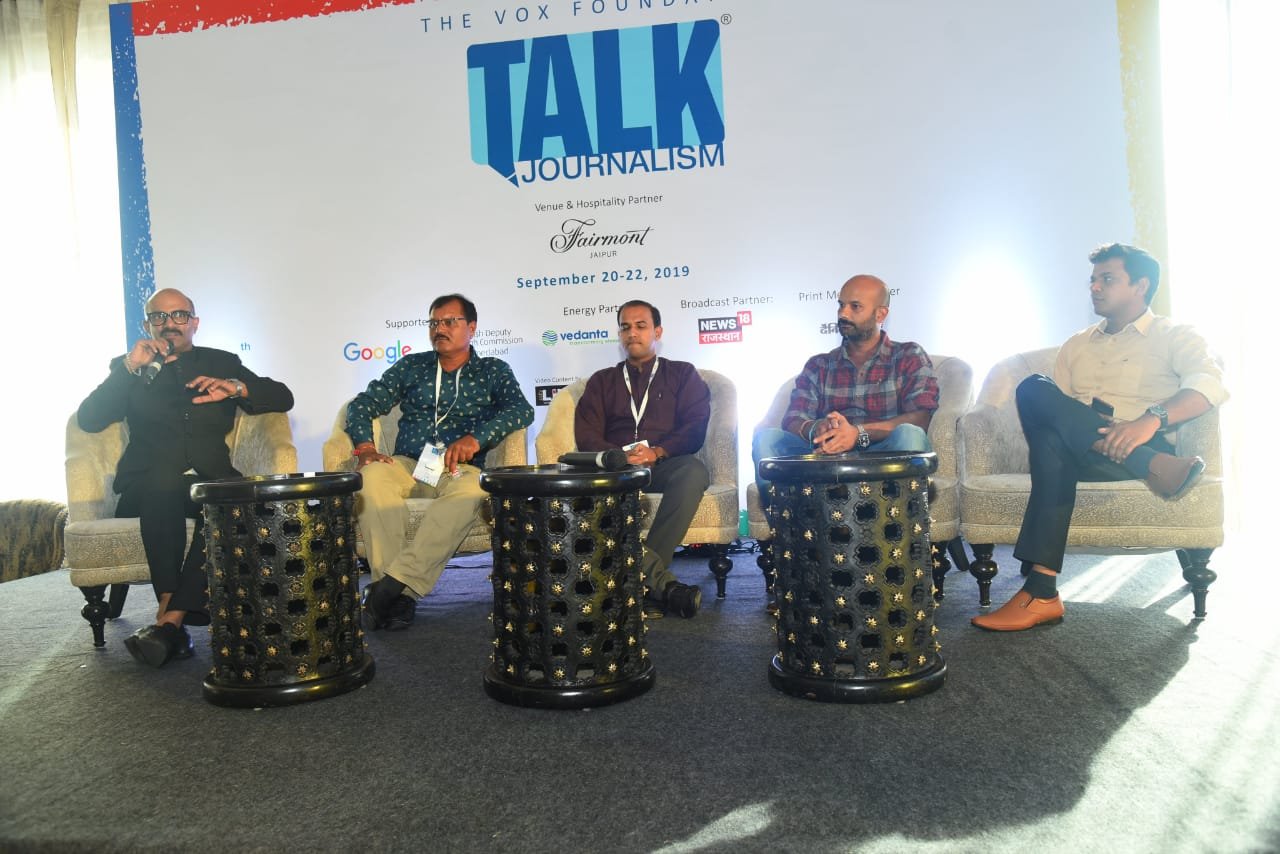Jaipur, 20 September 2019
Often less visible in a clutter of the news dominating mainstream national media, are the voices from remote rural villages of India. They gained platform at a gathering of international journalists on the first-day of Talk Journalism 2019 on Friday. A session ”Khul Ke Bol” had on its dais Ambu Patel who reports big news from small villages of Gujarat, Vikas Tiwari a reporter of Naxal belt villages and a microbiologist turned journalist to highlight challenges of public healthcare, Saurav Kumar. They were in discussion with the Talk Journalism founder Avinash Kalla and the stories that followed were intriguing far beyond the routine mainstream news.
The session shared important insights on the lesser-known stories based in the smallest of villages all over the country. Avinash Kalla shared the importance of story-telling, especially from rural areas. The discussion gave emphasis on giving voices to those who are unable to speak for themselves, to those who are never to demand justice and those who live their lives in uncertainty and oblivion.
The stage was set to open to the panelists, the audience was filled with awe when each panelist shared a beautiful story about their struggles and hardships.
Ambu Patel started the discussion and shared a personal narrative that consisted of his struggle as a journalist based in a tiny village in Gujarat. “Journalism is a medium to reach the smallest of communities”, he said. He considered writing to be a powerful tool. He always kept his writing style “short” and “simple” and never aimed to beautify or glamorize his stories. “Journalism is my weapon,” he asserted. He believes that journalism will bring a change at places where change is necessary for the survival of these villages.
Saurav Kumar, a microbiologist turned journalist talked about the difficulties people face in healthcare and sanitation aspects. He wanted journalism to show the reality of wars that are going on in the villages and small towns. His passion for journalism was ignited when his friend’s mother died due to failure to get adequate healthcare facilities in government hospitals in a small village in Bihar. His story, though rejected by many media houses, was finally picked up by ‘Youth ki Awaaz’.
He wishes that journalists highlight the “agony” and “pain” that the people in villages suffer from. “We fail to highlight this plight of the unhurt, unseen, unrecognized and the unprivileged”, he added. He concluded quoting the prominent personality Louis Hannigan, ‘being marvelous is in the contradiction of the real’.
After talking about the problems in healthcare systems in the villages, the tone of the panel discussion shifted to a much serious and grave issue. Vikas Tiwari shared his struggles which were based in a tiny village that is prone to attacks by naxalites, Bastar. He felt that the plight of villages like Bastur is only highlighted, rather heard in the time of a blast. He understood that journalism, though risky is the only way out. “Democratic government and Public ‘Jantana’ Government continue to pressurize independent journalists immensely,” stated Vikas. He blamed the poor quality journalism in India as to why people fail to recognize heroes like Nemi Chand Jain and Sayan Reddy, two journalists who were killed horrendously by Naxalites.
“If I write, some might read. If someone reads change might take place,” he concluded on an inspiring note.
The panel discussion was filled with inspiring yet grave and heavy stories by knowledgeable people. However, Pankaj Sharma tried to end the discussion on a positive and light-hearted tone. As he begins to talk about inspirational stories about villages, one still possesses a ray of hope.
Pankaj Sharma makes documentaries on the successes and positive stories that take place in villages. “20 minutes of my documentary entails the positive developments and progresses in the villages, and the next 5 minutes discuss the improvements that can take place in future.”
Text: Aashna Jain & Ishan Fouzdar | Copy Edit: Niharika Raina | Photo Desk: Sagar Samuel | Editorial Coordination: Rupali Soni & Niharika Raina


